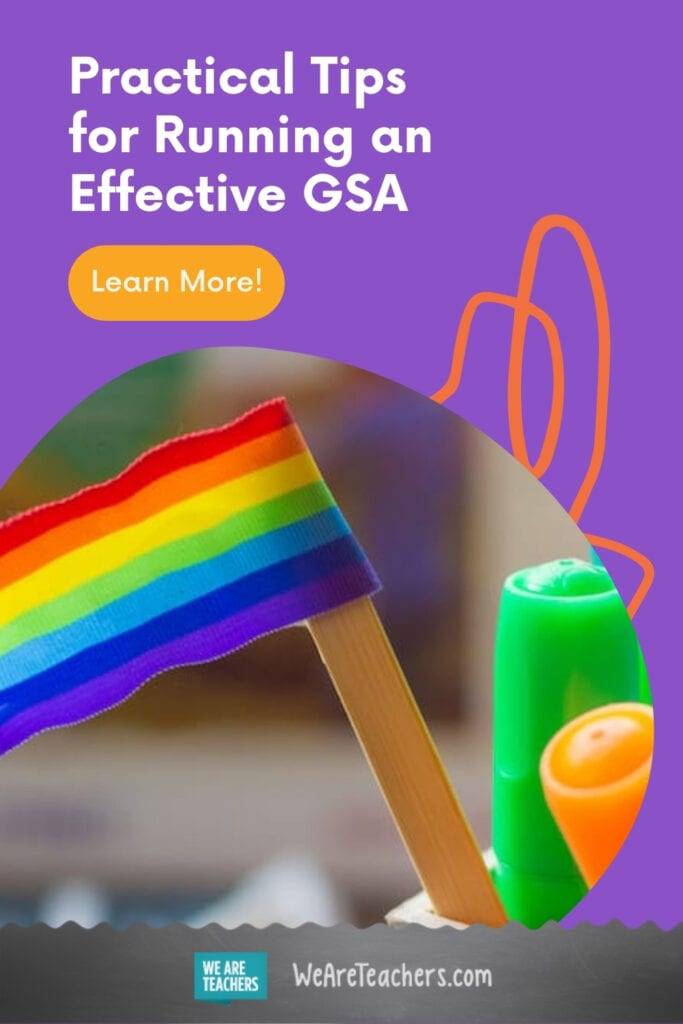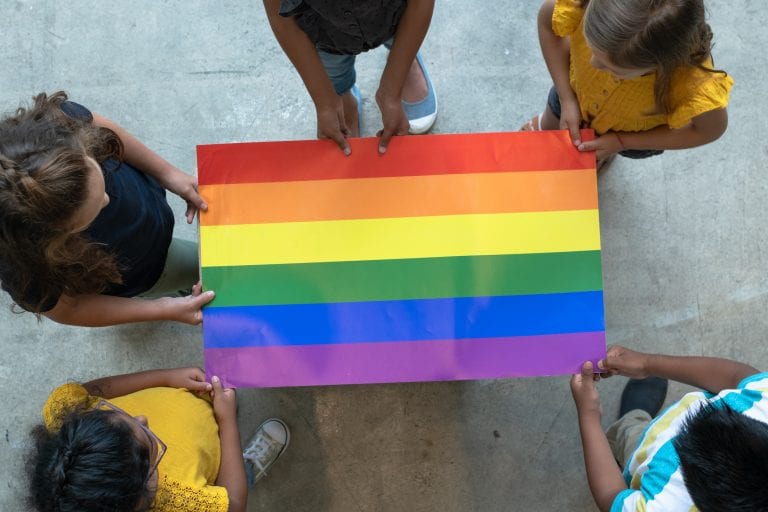The presence of a Gender and Sexuality Alliance (previously called a Gay-Straight Alliance, or GSA for short) in a school has a profound impact on the well-being of LGBTQ youth. GLSEN’s most recent National School Climate Survey found that LGBTQ students with a GSA experienced lower levels of victimization and felt a greater sense of belonging in their school communities. We know how important they are, but how exactly do you run one? Just in time for Pride, we tapped into the expertise of GSA advisors in our WeAreTeachers Helpline group and rounded up their top tips for running an effective GSA.
Know your role
Something we heard over and over is how important it is that your GSA be student-led. Teacher and GSA advisor Becki Clesse recommends, “Let the kids be your guide. You are there to support them and create a safe space for them to gather. Be that adult in their life that loves and cares for them unconditionally while they thrive in student leadership roles.”
But letting them steer the ship doesn’t mean they don’t need your guidance. You can be a great support to them when it comes to things like knowing their rights, addressing pronoun and name changes with other teachers, and caring for their overall well-being. You’ll also need to be able to guide them through “ouches.”
Advisor Brooke Bivona explains, “There is a lot of teaching each other how to be an ally. Our clubs are full of different genders and orientations. Just because one student may understand their identity doesn’t mean they can’t harm another student with their words and actions. We have had a lot of times where we had to unpack a statement because it was hurtful to another member of our club.”
Students may also need some ideas for and facilitation of outreach and activities. Some of them that came up include: guest speakers and book talks; school inclusion events or assemblies; participating in Pride, No Name-Calling Week, or the Day of Silence; potluck dinners; and donation drives benefitting LGBTQ youth.
Use the resources at your disposal
Two national organizations came up over and over. First, you’ll want to check out GLSEN, which has excellent resources for getting started. You should also register your group at GSA Network and download their new Virtual GSAs In Action Toolkit. Both websites have tons of information on everything from LGBTQ history to queer and trans wellness resources. And if you can attend HRC’s Time to THRIVE conference in support of LGBTQ youth, you won’t regret it!
Don’t forget your local resources, either. Look for community LGBTQ organizations (like GSAFE in Madison, WI) that can come talk to your group or set up a booth in the cafeteria. And use your guidance team. Several advisors we talked to had a school counselor or psychologist attend meetings to help them navigate challenging conversations.
Brace yourself for pushback
Teacher Brandice Snowden is a mom of a student trying to establish a chapter. She told us, “Some districts/campuses make rules that target organizations like GSA to make it difficult to even start them. Or, if they get them started, to make membership so uncomfortable and/or dangerous (like forcing students to out themselves to family to be a member) that students will be afraid to participate.” So you’ll need to be prepared to stand up for your students. (Hint: if your school allows any other non-curricular clubs, it has to allow a GSA, too).
One idea that came up for making the GSA more accessible to kids in non-affirming families is to change the name. Middle school GSA advisor Debra Calle explains, “Some students may be there, and their parents do not realize what exactly the club is. So offering a name that students know what the club is about but does not announce it fully allows them a space to go if not accepted at home.” Calle’s group is called Safety Zone.
Remember that each year may look different
Each group is on its own journey. Bivona reminds us, “Don’t judge your success by what you have done in the past. Some years you have a team of students who are ready for protesting and educating their peers. Other years you have a group of students who just need a sounding board and would rather have close, intimate events and de-stress.”
For more on supporting LGBTQ students, subscribe to our newsletter.
Plus, Ways to Address Gender- and Sexuality-Based Teasing in Schools.


